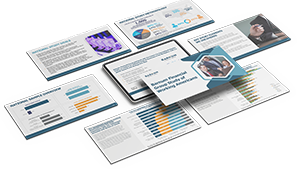
Your home is probably your most valuable asset. If a disaster strikes, you need to be sure that you have the proper insurance coverage. Technically speaking, home insurance is not mandatory, but it’s pretty much a required expense for homeowners and renters alike.
The coverage comes in handy for any physical damage to your house or its contents, personal belongings, and potentially overall liability.
What Does a Home Insurance Cover?
Home insurance covers the structure, any permanent fixtures, and personal belongings. This type of coverage is generally referred to as dwelling or property coverage.
It also provides liability protection in case someone is injured on your property. Homeowners insurance also covers additional living expenses if you need to move temporarily due to a covered event such as a natural disaster.
Depending on where you live, your policy may come with various add-on features like sewer backup coverage, flood insurance, earthquake coverage, and fire protection. You can also add coverage for items like jewelry and collectibles, which may not be covered under a standard policy.
Types of Homeowners Insurance
There are 8 types of homeowners’ insurance policies available, depending on the state you live in. These include:
HO-1: The basic policy that covers the least amount of risks.
HO-2: Covers a broader range of risks and provides more coverage than an HO-1 policy.
HO-3: This is the most common type of home insurance, providing coverage for your dwelling and personal belongings. There are some exclusions, such as flood damage.
HO-4: This policy is also known as renters’ insurance and provides coverage for tenants’ personal belongings and liability protection. It doesn’t cover the building.
HO-5: The most comprehensive type of home insurance. It covers replacement rather than the depreciated value. HO-5 provides more extensive coverage for personal belongings.
HO-6: This is commonly known as condo insurance and covers the interior of a unit from damage and liability protection.
HO-7: Similar to an HO-3 policy but specifically designed for mobile homeowners.
HO-8: A modified coverage option that is designed to cover older homes.
Options for Paying Home Insurance
You have two options for paying your home insurance — you can pay the premium yearly in one lump sum or use an escrow account through your mortgage provider. An escrow account allows you to pay the premium over the course of a year through your monthly mortgage payment.
Tips & Tricks When Buying Home Insurance
When shopping for home insurance, it’s essential to compare different policies and ensure you get the best coverage for the most reasonable price. Ensure you read all the policy details carefully to understand what is covered and what isn’t.
Some companies compensate policyholders immediately after a claim, while others may take a few weeks to process the payment. Consider this when comparing policies and choose one that offers quick reimbursements.
Some policies offer a reimbursement after you have rebuilt or repaired the damages. In such cases, you should use out-of-pocket money to begin repairs and then get reimbursed by the insurance company later.
Finally, ensure adequate coverage for all common disasters in your area. For example, if you live in an area prone to flooding, hurricanes, or widlfires, purchasing additional coverage to cover your home should a disaster occur is important.



